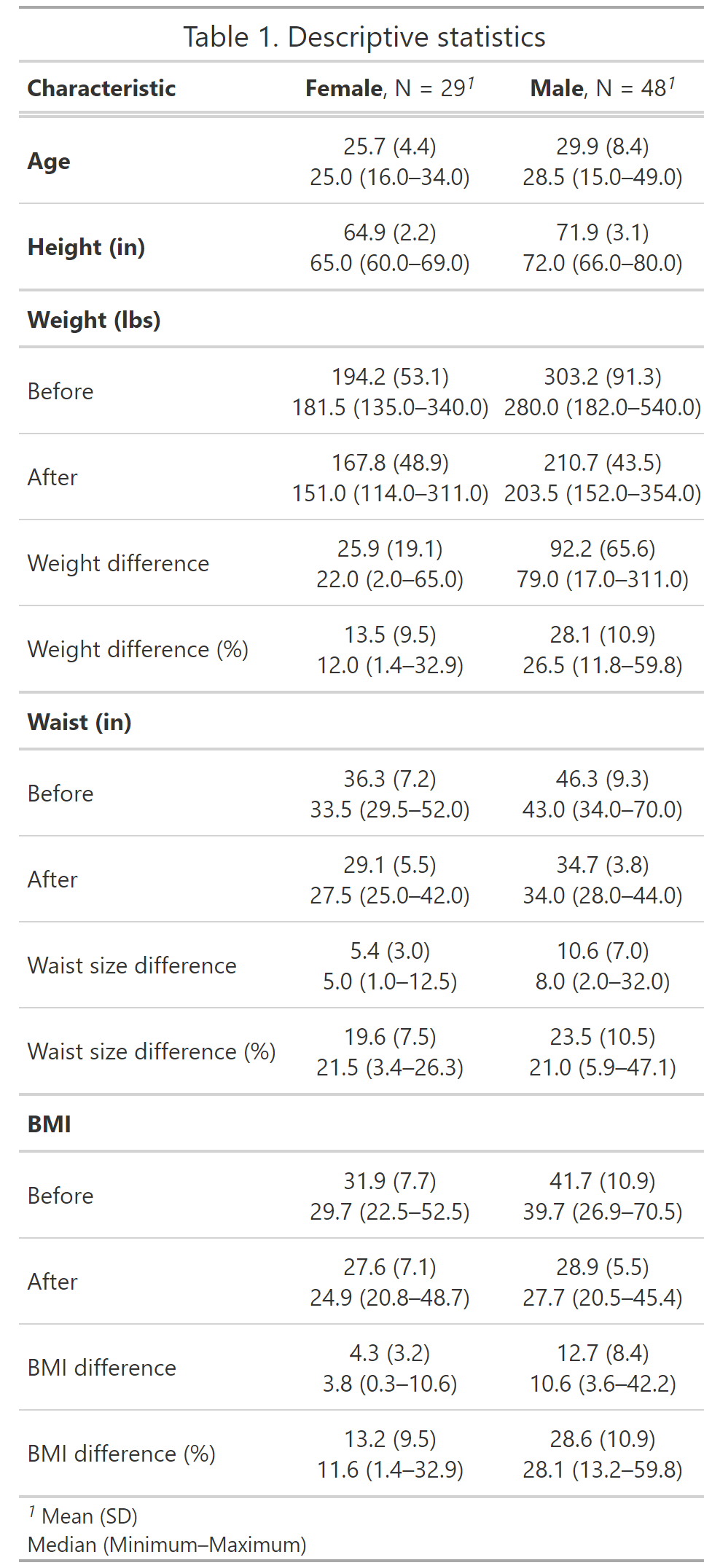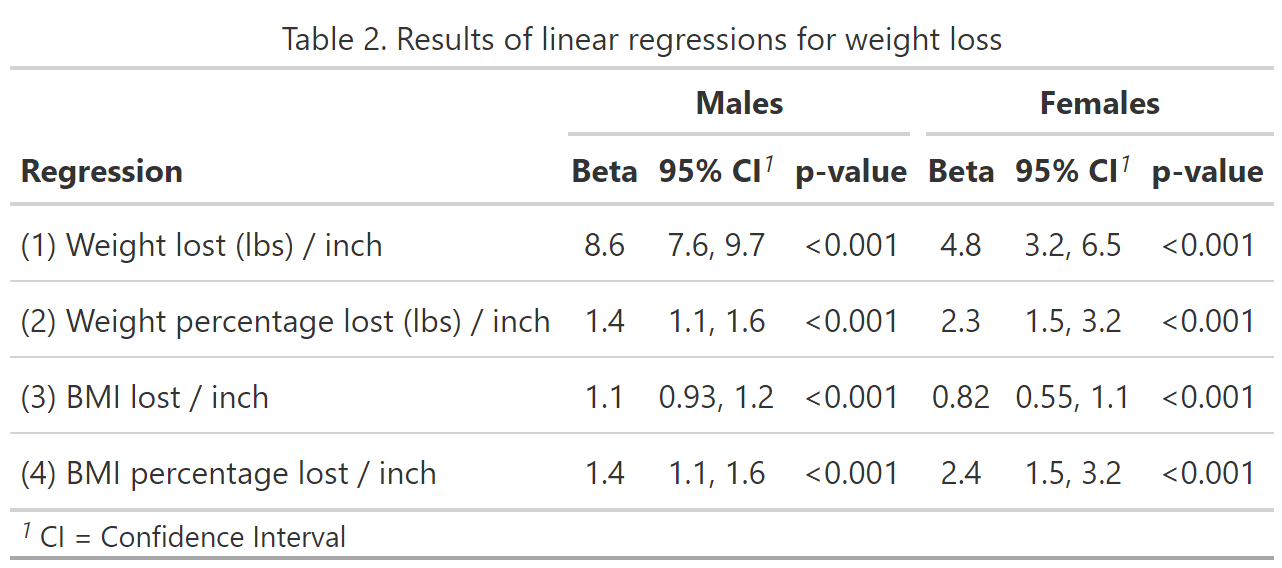I’ve used the PRAW package in Python to scrape data from the progresspics subbredit, and I ran the data analysis in R. I was able to collect data from 77 individuals and I chose to split the entire analysis by gender – due to the differences in abdominal fat distribution between men and women.

As can be observed from Table 1 and the plot, weight loss tends to be much higher for the males than for the females – both in absolute units and percentage-wise.
 I chose to run four different regression models, for each gender. While Dan’s article only considered weight change, I also included the weight percentage change, BMI change, and BMI percentage change.
I chose to run four different regression models, for each gender. While Dan’s article only considered weight change, I also included the weight percentage change, BMI change, and BMI percentage change.# Male lm(weightDiff ~ waistDiff, data, subset = gender == "Male") lm(weightDiff_perc ~ waistDiff, data, subset = gender == "Male") lm(bmiDiff ~ waistDiff, data, subset = gender == "Male") lm(bmiDiff_perc ~ waistDiff, data, subset = gender == "Male") # Female lm(weightDiff ~ waistDiff, data, subset = gender == "Female") lm(weightDiff_perc ~ waistDiff, data, subset = gender == "Female") lm(bmiDiff ~ waistDiff, data, subset = gender == "Female") lm(bmiDiff_perc ~ waistDiff, data, subset = gender == "Female")

Based on the results from Table 2, we could conclude the following:
Males
- On average, you need to lose 8.6 lbs (3.9 kg) to lose 1 inch off the waist.
- On average, you need to lose 1.4% of your weight to lose 1 inch off the waist.
- On average, you need to lose 1.1 BMI points to lose 1 inch off the waist.
- On average, you need to reduce your BMI by 1.4% to lose 1 inch off the waist.
- On average, you need to lose 4.8 lbs (2.1 kg) to lose 1 inch off the waist.
- On average, you need to lose 2.3% of your weight to lose 1 inch off the waist.
- On average, you need to lose 0.82 BMI points to lose 1 inch off the waist.
- On average, you need to reduce your BMI by 2.4% to lose 1 inch off the waist.
If you want to delve deeper, you can find the data and the code I used here.